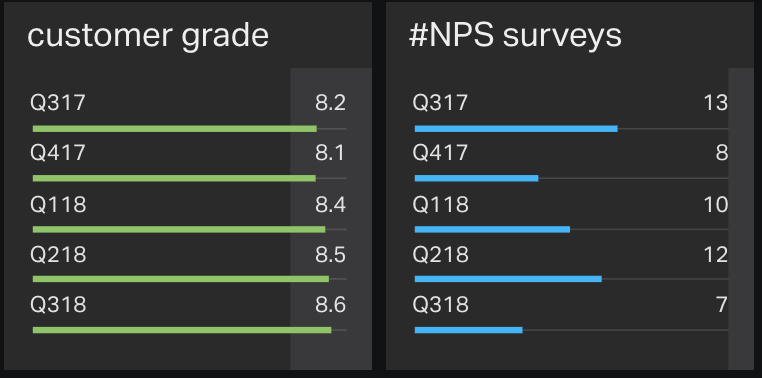Referrals are fantastic leads for new customers, revenue and even hires. We’ve all experienced referrals working out nicely. But -alas-, it doesn’t scale… it seems impossible to drive word-of-mouth and referrals. But is it now?
4 B2B lead gen strategies for Startups & Scaleups
Successful B2B Startups & Scaleups have one thing in common: they know how to generate leads. They have to, because there’s no “Coca Cola” or “Salesforce” brand yet. So how do they do it? Let’s delve into the 3 strategies we already know before I show you an alternative:
Strategy #1: Inbound strategy
Where content & thought leadership drive both search engine and social traffic. That traffic converts to leads on-site and then to revenue by self-service or with activation by a Business Development Rep (BDR) or Account Executive (AE)
Strategy #2: (Modern) outbound strategy
Where prospecting & outreach are done online. Only in lead qualification or demo phase, there’s voice or video interaction with a BDR and/or AE
Strategy #3: Boiler room outbound strategy
Where prospecting, outreach, lead qualification and selling are all done by phone by men in suits wearing headsets in a cheap office somewhere in a B-location
Reading the above you probably went something like…: “Yeah… Uhuh… WUT?!” Because -you know- we’ve been in the 21st century for a while. But this boiler room strategy is exactly what is going on in a traditional industry like (tech) recruiting agencies. Many Scaleups & Startups still (have to) rely on those agencies to get their vacancies filled. This is unfortunate because the majority of time and energy within these agencies is spent on cold calling companies and convincing of candidates. Not on the actual finding & matching of talent. But I digress!
Strategy #4: Referral based lead generation
Referral-based lead generation (lead-gen) is a strategy that relies on introductions by others. It’s a very specific form of positive word-of-mouth. These introductions can be done by 3 types of ‘others’:
- Existing customers, which are the obvious source of referrals. It requires them to be both happy and thrilled. More on that later…
- Trusted institutions are always entities, and usually companies. Their representatives are trusted by proxy, because of the position, reputation or activities of these entities. They are perceived as knowledgeable, independent, objective and/or seen as thought leaders in a space. But not necessarily the experts on your business. For example, we get many referrals from Venture Capital institutions. They need their companies to hire people, they like how our predictable results, but they are not an expert in the field of recruiting. But still, because of their key position in your customer ecosystem, it works
- Trusted individuals are similar to the institution representatives in the sense that they are human. However, the difference is that they are trusted by your future clients for other reasons. They tend to be experts in the field of your business. They might be competing with you even. But because they are alone, they often come across leads that or not for them. However, it requires a respectful relation.
100% of our new business is from referral leads
Our reputation and the referrals that come from it are our single source of new business. We’ve tried inbound as well as outbound strategies, and growth hacking and calling. We spent a lot of time with almost no additional results. Now we rely solely on inbound leads from referrals and network. The referrals come from investors, from existing clients, from former clients, from government agencies, from freelance recruiters, it’s quite heart-warming actually. Oh boy, It’s beautiful…
Requirements for a referral lead-gen strategy
1. Being part a tight-knit, homogeneous ecosystem
There are two things about a market that makes it easier to scale referral-based leads:
- Having either a strong customer industry with deep industry knowledge or be a product leader (and disruptively different)
- It’s a tight, homogenous group of companies that tend to talk to each other a lot
The first bit increases your chances of creating thrilled, happy customers, and the second bit ensures that messages diffuse and propagate on their own. (pronounce as: “FOR FREE!!”)
An alternative strategy for intimate ecosystems
LevelUp provides in-house tech recruiting capacity for fast-growing technology companies in the Netherlands. Digital Marketers evolved into Growth Hackers by borrowing from adjacent specializations (e.g. front-end & UI) , dropping aspects (e.g. print/tv/radio advertising) and radically changing mindset (to a thesis-driven growth mindset).
We see that next generation of tech recruiters popping up now too. And again, borrowing from adjacent specializations (e.g. content marketing), dropping aspects (e.g. cold calling), and radically changing mindset (to a data-driven and personal approach).
In our delivery model, we work from our client’s office a couple of days per week. And we usually work with both the founders and their investors. Needless to say, we are quite intimate with our homogenous group of clients. Yay!
2. It needs happy, loyal customers.
Reputation is what others tell about your company when you are not in the room. So you better make that positive gossip. To get positive gossip, you need a happy customer. So you deliver an excellent service or product (you do that right?). But that’s not enough. It needs to be better than expected.
So we could go into all kinds of black hat influencing techniques to change expectations while overdelivering (like the Zappos example below). But in our case, the recruiting agency industry has done it for us. The bar is set quite low; with the NPS in the Staffing & Recruiting agency being 4, just around the 0 (NPS can go from -100 to 100); whereas the global industry average is 43.
Side note: I do believe it’s very hard to consistently deliver results in hiring when the product you are delivering is a sentient being with an own opinion.
Zappos experimented with purposely delivering the wrong shoe size to clients, but stocking the right size in a depot close by. Once clients received the right size within 30 minutes… they were blown away and happier than they would ever be with the right size immediately. This strategy is a grey hat and untenable in the long term. But the point is, that customer happiness is both unpredictable and irrational.
The other point is, Zappos wasn’t optimizing for one happy customer on one single transaction. They were optimizing for customer loyalty.
Net Promoter Score measures Customer Loyalty
So we know that it’s not just about the quality of your product or service, and we know that we are all inherently irrational and unpredictable beings. But we know as well that customer loyalty is key to getting in referrals. Instead of throwing our hands up in the air, screaming “It’s no use!”, let’s see how we can measure customer loyalty.
Enter Net Promotor Score (definition Wikipedia):
Net Promoter or Net Promoter Score (NPS) is a management tool that can be used to gauge the loyalty of a firm’s customer relationships. It serves as an alternative to traditional customer satisfaction research and claims to be correlated with revenue growth. NPS has been widely adopted with more than two thirds of Fortune 1000 companies using the metric.
It has to do with the question: “would you recommend us?” that we’ve all received so often already. And it’s no coincidence that these massive companies use it structurally. Because science shows a positive Net Promotor Score is a leading indicator for long-term sustainable growth and shareholder value creation.
Calculating NPS
The Net Promoter Score is calculated based on responses to a single question: How likely is it that you would recommend our company/product/service to a friend or colleague? The scoring for this answer is most often based on a 0 to 10 scale.
The thing is, that the average grade doesn’t tell you a whole lot. Have a look at our customer grade over the past quarters… it fluctuates, but what does it tell?

Well, it doesn’t. However, it is intuitive. Especially if you are in a country with the metric system and your school is as well (thanks Napoleon!).
Wrapping up
And that is exactly where the throttle of our referral-based marketing is; at customer loyalty, which one can measure with NPS. Go check if you are in a market where referral-based marketing might work. Have a look at whether you are tapping into the potential of both existing and previous customers for referrals. And think about whether there are other institutions or maybe even groups of individuals that might be great ambassadors for your product or service. That might propagate your value proposition and scale your business.

